Clinical Differential Diagnosis
ARF, CRF, bladder neoplasia, obstructive urolithiasis, resistent UTI, infectious.
Image Interpretation
A 3.5 centimeter mineralizing bladder mass is occupying the trigone and obstructing the ureters at the region of the ureteral papillae. The ureters did not appear invaded by the mass. Mild bladder rotation has occurred owing to mass expansion. Moderate to severe hydronephrosis is present in both kidneys owing to ureteral obstruction. Ultrasound-guided laser ablation was performed for palliative removal of the mass and decompression of the ureters. A minimal amount of ureteral dilation was noted at the end of the procedure with slight residual hydronephrosis on followup. Ureteral function appeared adequate noted by contractility.
Sonographic Differential Diagnosis
Bladder mass with obstructive pattern to both ureters. Non-resectable without ureteral transposition. Strongly mineralizing aspects of the bladder mass suggest transitional cell carcinoma.
Sampling
Endoscopic bx- transitional cell carcinoma
DX
Non-resectable trigonal bladder transitional cell carcinoma with ureteral obstruction.
Outcome
After undergoing the initial UGELAB procedure the patient survived 227 days and then was humanely euthanized.


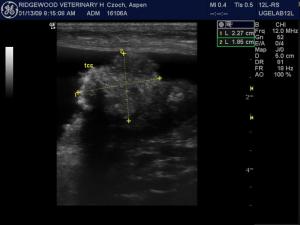
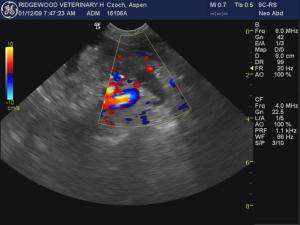
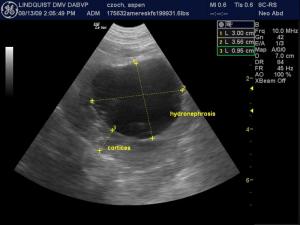
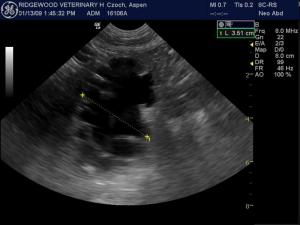
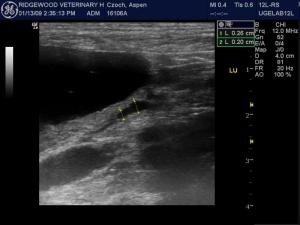
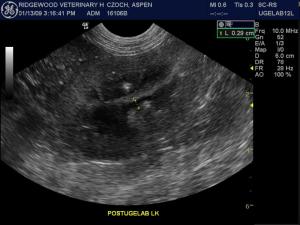

Comments